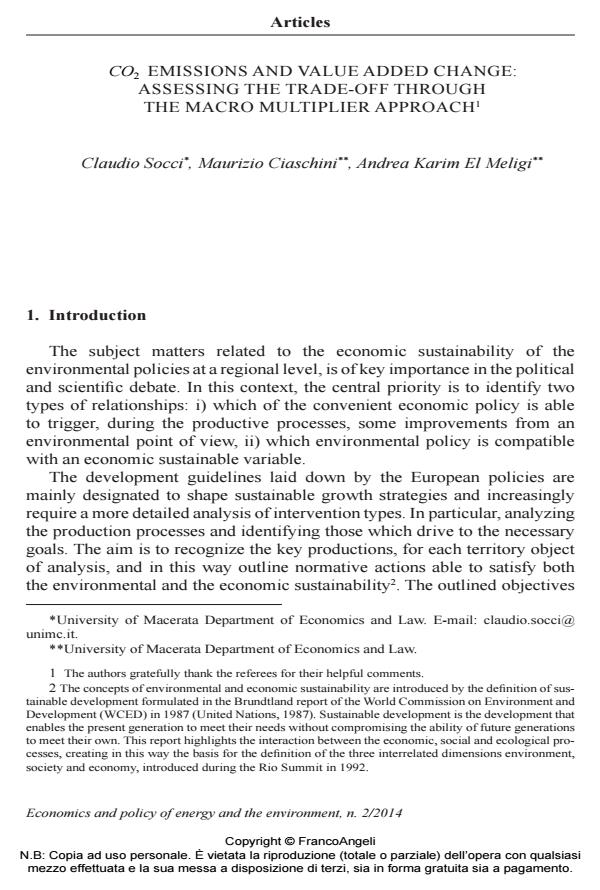CO2 emissions and value added change: assessing the trade-off through the macro multiplier approach
Titolo Rivista ECONOMICS AND POLICY OF ENERGY AND THE ENVIRONMENT
Autori/Curatori Claudio Socci, Maurizio Ciaschini, Andrea Karim El Meligi
Anno di pubblicazione 2015 Fascicolo 2014/2
Lingua Inglese Numero pagine 26 P. 49-74 Dimensione file 383 KB
DOI 10.3280/EFE2014-002004
Il DOI è il codice a barre della proprietà intellettuale: per saperne di più
clicca qui
Qui sotto puoi vedere in anteprima la prima pagina di questo articolo.
Se questo articolo ti interessa, lo puoi acquistare (e scaricare in formato pdf) seguendo le facili indicazioni per acquistare il download credit. Acquista Download Credits per scaricare questo Articolo in formato PDF

FrancoAngeli è membro della Publishers International Linking Association, Inc (PILA)associazione indipendente e non profit per facilitare (attraverso i servizi tecnologici implementati da CrossRef.org) l’accesso degli studiosi ai contenuti digitali nelle pubblicazioni professionali e scientifiche
Recently, political and scientific debate is strongly focused on issues questioning the economic sustainability of environmental policies at regional level. Following European directives and protocols and in accordance with the principles of sustainable development, the interventions designed by policy makers are required to aim at restructuring the final emissions. In this paper an effort is made to assess a new structure for the final demand which would be able to achieve a composite task: the economic sustainability and the environmental improvement. In this respect, the regional Social Accounting Matrix (SAM), referred to a typical region of the Mediterranean area, the Sardinia, will be integrated with the environmental accounting scheme in order to develop the regional multisectoral extended model. The resulting inverse matrix will be used to identify which composition of the final demand (policy control variable) is consistent with the complex emissions together with a positive variation of the aggregate total output (policy target variable). For this purpose the Macro Multipliers approach, through the use of a bidimensional decision-making index, will allow us to identify the convenient structures for both economic and environmental target and assessing the expected negative trade-off.
Parole chiave:Environmental policy, multisectoral extended model, macro multipliers approach
Jel codes:D58, E16, H20, H76
- The nexus of income, expenditure, and output in agribusiness amid global crises: the case of Nigeria Irfan Ahmed, Ibrahim Alamir, Abdulwahab Mujalli, Mohanad Sadoun Alsadoun, Claudio Socci, Stefano Deriu, in Journal of Agribusiness in Developing and Emerging Economies /2025 pp.1
DOI: 10.1108/JADEE-08-2024-0279
Claudio Socci, Maurizio Ciaschini, Andrea Karim El Meligi, CO2 emissions and value added change: assessing the trade-off through the macro multiplier approach in "ECONOMICS AND POLICY OF ENERGY AND THE ENVIRONMENT" 2/2014, pp 49-74, DOI: 10.3280/EFE2014-002004